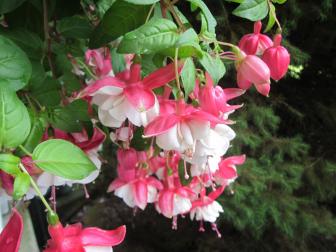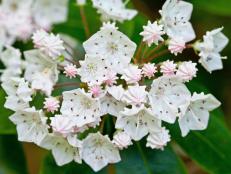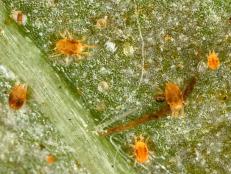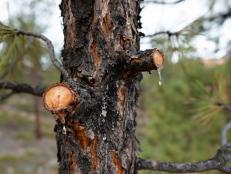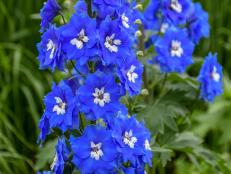How to Care for Fuchsias
Learn how to properly care for budding fuchsias all year with these simple gardening tips.
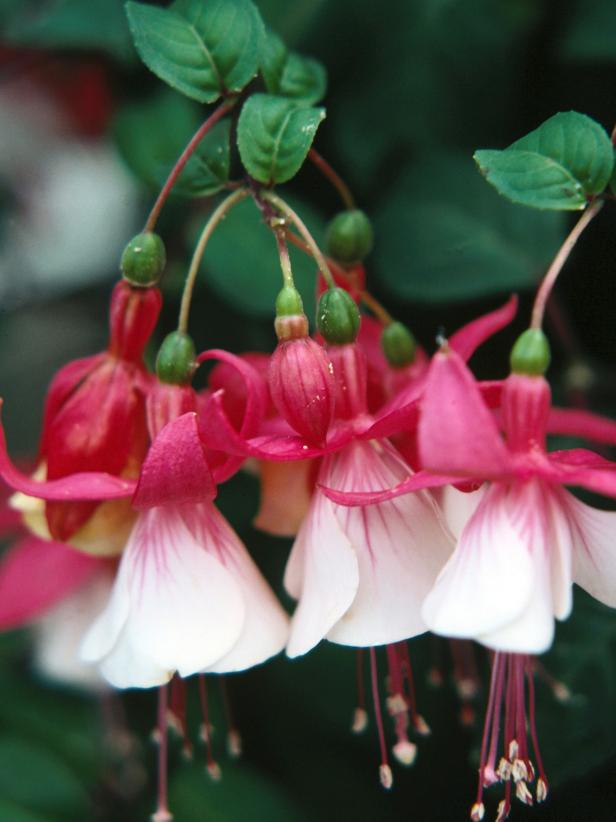
Commonly grown in hanging baskets, there's a lot to love about fuchsia plants, especially because there are so many selections to choose from. If planting a hardy fuchsia, it can also make a great shrub in the garden.
Fuchsia packs plenty of flower power, opening hordes of blooms over a very long flowering window from spring to fall frost. Blossoms open in many hues, including purple, pink, red, white, lavender, yellow and orange. There’s easily a fuchsia flower color to please every gardener.
22 Plants to Attract Hummingbirds 22 Photos
Turn your yard into a hummingbird buffet by planting flowers they can’t resist.
The traditional flower form on these blooming beauties features an outer skirt surrounding an inner petticoat. These two flower parts are most often different colors, giving fuchsia blooms a festive feel. Sometimes the inner petticoat layer boasts rich ruffles. Fuchsia flowers easily steal the show when they’re on display, and they’re also a hummingbird magnet.
Fuchsia Care
Fuchsia plants are some of the earliest ones sold in spring. Why? Because these extravagant bloomers prefer cool air. For many types, their ideal growing temperature is 55° to 80°F. Some fuchsias stop forming flowers at higher temperatures. In regions with naturally cool summers, fuchsias thrive easily. In warmer regions, fuchsia plant care must be on target to keep these bloomers happy.
Light
To succeed with fuchsias, give them bright indirect light in most regions with protection from afternoon sun. In foggy areas of Coastal California or the Pacific Northwest, where summers are cool, full sun is fine. Fuchsias perform well in containers on porches or north-facing patios.
Protect containers from prolonged sun exposure because fuchsia plants dislike hot soil. When temperatures slip into the 90s, many fuchsia flowers drop and plants stop blooming until lower temperatures return
Soil & Watering
Fuchsias are fussy about soil. It can’t be too wet, too dry or too hot. In containers, use a commercial bagged potting mix developed for the close confines of a pot. These mixes are soil-less, lightweight and drain well. Mix in a handful of compost to enhance soil fertility. To keep soil from overheating, site your fuchsia where the pot is shaded through much of the day. A porch, north-facing deck or partially shaded location works well. You can also create some shade by surrounding your fuchsia pot with other containers that shade it.
Successful fuchsia plant care requires attention to soil moisture. Avoid letting soil in containers dry out completely. Keep soil moist, but don’t overwater. The best gauge for knowing when to water is shoving your finger into soil or lifting the container. Wet soil is heavy; dry pots are light.
Fertilizing & Growth
To encourage fuchsia flowers to form in record numbers, pinch out growing tips until flower buds form. This works if you overwinter fuchsias or buy small seedlings. Removing stem tips causes stems to branch and become bushy. More branches mean more flowers.
For plants in full bloom when you buy them, keep the flower show going strong by watering with a water-soluble bloom booster fertilizer every 7 to 10 days. Slow-release bloom booster fertilizers work, too, but for fuchsias in containers, plants need more nutrients more often than a slow release delivers. Pair a slow release bloom booster with a weekly dose of water soluble bloom booster at half the recommended rate.
The last step in encouraging fuchsia flower formation is to remove the berry-like fruits that form on plants. They’ll appear as hard green fruits at first, then slowly ripen to a softer, often purple fruit. All types are edible, although many are flavorless or have an unpleasant aftertaste. Fuchsia splendens is supposed to have the tastiest fruit that folks use to make jam.
Overwintering
To overwinter fuchsia, bring plants indoors prior to the first hard freeze. Cut plants back by at least half. Place them in a cool location, like an unheated bedroom or basement, where the temperature hovers near 45° to 50°F (temps near 60° F are okay). Water occasionally—just enough to keep roots from drying out. Leaves will drop until you have a pot of bare stems.
In spring, after all danger of frost has passed, carry your pot outdoors. Replace the first inch or two of soil with compost-laced potting mix; water thoroughly. As new growth appears, trim branches. Pinch growing tips until first flower buds appear. Pinching results in bushier plants. Overwintering works best for fuchsias you planted yourself in a blend of potting mix and compost. It’s tough to overwinter hanging baskets because the soil mix they’re in tends to dry out and won’t rehydrate.
Fuchsia Selections
Fuchsia plants are native to Central and South America, Australia and Tahiti. While most are grown as annuals in the United States, a few hardy fuchsias survive in regions with mild winters. Fuchsia magellanica, known as hardy fuchsia, survives in Zones 6 to 9. Also known as bush fuchsia, this fuchsia grows 4 to 10 feet tall and 3 to 6 feet wide.
There's a cultivar for virtually every condition in the country including cold climates.
- 'Molonae' tolerates temperatures at about minus 10 degrees F. In fall, cut it down to the ground.
- 'Neon Tricolor' fuchsia is also hardy in low temperatures down to zero to 10 degrees Fahrenheit. Its flowers are pink, orange and yellow.
- 'Queen Esther,' on the other hand, loves heat, not the cold.
- Depending on their exposure to the sun, some fuchsias can also change foliage colors, like Fuchsia magellanica 'Aurea' which is golden in sunshine and green in shade.
- Some fuchsias come with interesting names. "'Lottie Hobby' is hardy to 10 degrees F.






